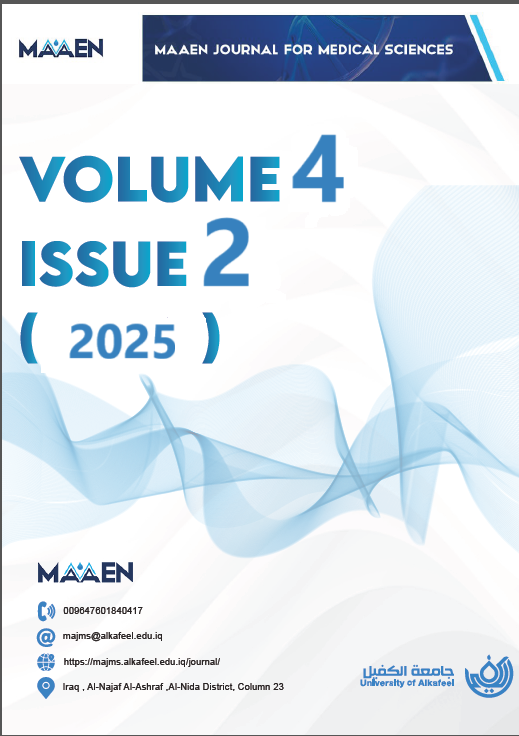Abstract
https://majms.alkafeel.edu.iq/journal/vol4/iss2/1/
Background: Repurposed medications were the only means of aiding in the prevention and initial treatment of COVID19 infections in the lack of effective treatment.
Objective: The goal of this study is to determine whether preventive measures affect the rate of COVID-19 infection in
the contact people and whether age, sex, and medication use correlate to prognosis.
Methods: The questionnaire responses were used as a source of data, and 829 patients have a full recovery. With the
exception of 114 volunteers who interacted with COVID-19 patients, the patients served as respondents; however, their
outcomes were negative.
Results: The use of computed tomography (CT), x-rays, clinical signs, and medical expertise is frequently far more
prevalent in males than in girls. Depending on the age difference, a CT scan was employed for diagnosis in younger age
groups. symptoms that were more prevalent in men and markedly different in women. More women experienced joint
pain, gastrointestinal distress, depression, and exhaustion. Before and throughout the infection, every patient in the age
groups that were evaluated took one or more preventive measures. Additionally, the fourth and fifth groups used
antiviral drugs significantly more than the other groups. Azithromycin, Remedisivir, anticoagulants, and corticosteroids
all promote healing and reduce mortality.
Conclusion: We concluded a great differences in the complaining between the two sexes, female had more fatigue,
depression, GI upset and joint pain. Drugs including azithromycin, Remdesivir, corticosteroids, and anticoagulants are
used by patients to treat their infections faster and reduce mortality.
Background: Repurposed medications were the only means of aiding in the prevention and initial treatment of COVID19 infections in the lack of effective treatment.
Objective: The goal of this study is to determine whether preventive measures affect the rate of COVID-19 infection in
the contact people and whether age, sex, and medication use correlate to prognosis.
Methods: The questionnaire responses were used as a source of data, and 829 patients have a full recovery. With the
exception of 114 volunteers who interacted with COVID-19 patients, the patients served as respondents; however, their
outcomes were negative.
Results: The use of computed tomography (CT), x-rays, clinical signs, and medical expertise is frequently far more
prevalent in males than in girls. Depending on the age difference, a CT scan was employed for diagnosis in younger age
groups. symptoms that were more prevalent in men and markedly different in women. More women experienced joint
pain, gastrointestinal distress, depression, and exhaustion. Before and throughout the infection, every patient in the age
groups that were evaluated took one or more preventive measures. Additionally, the fourth and fifth groups used
antiviral drugs significantly more than the other groups. Azithromycin, Remedisivir, anticoagulants, and corticosteroids
all promote healing and reduce mortality.
Conclusion: We concluded a great differences in the complaining between the two sexes, female had more fatigue,
depression, GI upset and joint pain. Drugs including azithromycin, Remdesivir, corticosteroids, and anticoagulants are
used by patients to treat their infections faster and reduce mortality.
